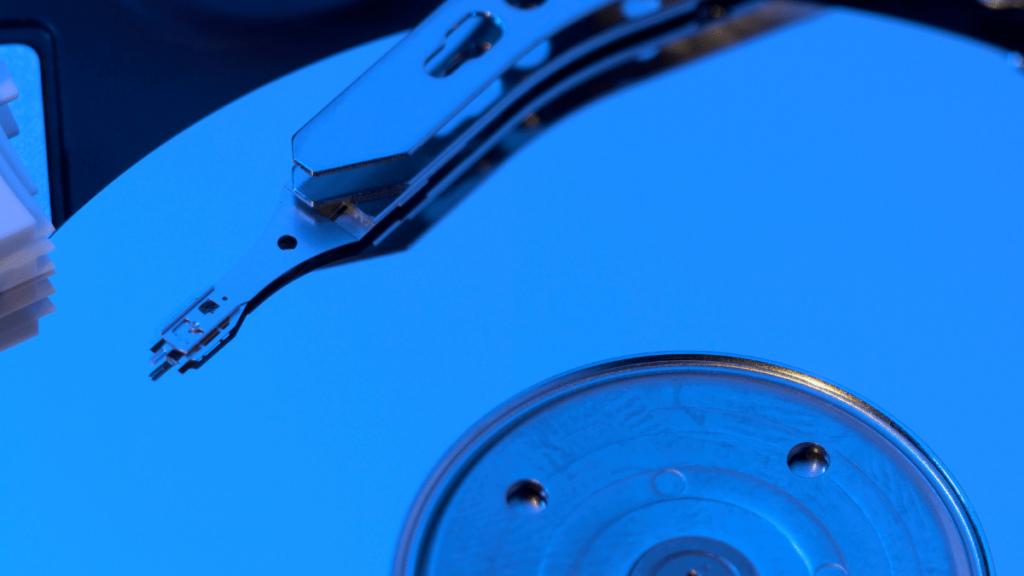Data cleanse techniques outlined below.
Even though SSDs are turning out to be mainstream, there are a lot of businesses that are still counting on using out-of-date techniques to destroy the data stored on such drives. When it is time to upgrade the IT (Information Technology) assets, you will experience problems with the ways to take care of the data held on them.
After a while, the hardware will have built up a wide range of stored data, right back from when it was switched on the first time. You have to deal with this data in the approved manner to avert any regulatory infringements and/or data breaches. SSD (Solid State Drive) and HDD (Hard Disk Drive) are usually two different types of hard drives that are used to store data on IT assets.
Data Storage on a Hard Disk Drive and a Solid State Drive
There are one or more rotating disks in a Hard Disk Drive that rely on magnetic storage whereas no moving or mechanical components are present in a Solid State Drive and flash memory is used to store data. Chips are used in SSDs to store data and these are becoming more and more powerful, but also smaller as technology advances.
Due to their different construction, dissimilar techniques are required to destroy data stored on these two very different kinds of drives.
Techniques to Destroy Data on SSDs
Degauss, puncture, and shred are the three most common techniques that are used to destroy data stored on a Solid State Drive (SSD). These are the techniques that render the media unusable. Where possible, it is preferable to wipe hardware by electronic means, using a secure data erasure technique based on software. It lets the IT asset to be remarketed, which is better environmentally and monetarily.
For a physical data cleanse, to get rid of the data contained on SSDs, each chip contained within the SSD must be destroyed physically. This varies to HDDs in which magnetic discs are used, containing data held on ‘CD-like’ platters, which can be cleaned with the help of degaussing, or even by the process of physical destruction.
Shredding
SSDs can be destroyed in a mechanical process that makes use of specialist shredders. There are rotating blades in such machines, and the material fed into them is forced through these cutting blades that shred the hard drive.
However, since it is possible to pull data through small intact pieces of SSDs, the punching or shredder machine used, must meet the needs precise to the materials that are being data erased. Normally, where a shredder is concerned, this means using a shred size small enough to make sure the destruction of individual chips.
The resulting output is tiny particles of shredded material, the exact size of which depends on the ability of the shredder. It is recommended that shred sizes for SSDs be smaller than ten millimeters to make sure the ships are destroyed.
Punching
Even though punching SSDs is also a physical process, it is the one that varies somewhat to hard drive shredding. Drives are put in machinery containing a press that punches pins into the hard drive, and the chips contained within them, destroying the stored data. After punching, the entire memory chips are annihilated in that process and the drive is littered with holes.
Degaussing
Since the data is stored electronically on a solid-state drive, degaussing will not erase the data stored on SSDs (Solid State Drives). It is an efficient technique to remove the data stored on magnetic tapes on open reels or cassettes, floppy disks or HDDs since the data is stored using layers of magnetic fields, disrupted and eliminated by degaussing.
Alternate fields of strong magnetic amplitude are applied by a degausser, which takes away the magnetic properties of the drive or arranges the magnetic data pattern again, irrecoverably eliminating the data.
Wrapping Up
To ensure regulatory compliance and a secure data cleanse or destruction on SSDs (solid-state drives), both punching and shredding can effectively meet the data sanitization compliance required, while degaussing can’t.
However, both respective methods – shredding and punching – must be performed to the correct specification, to make sure the physical destruction of the chips within those hard drives and delivering complete peace of mind.
Data security needs to be threaded into every aspect of the way an aged IT asset is dealt with. Concerns associated with data destruction not just carry heavy penalties, but there’s even the almost immeasurable expense to the reputation of your business or company, leading to any subsequent violation.
TechReset is one of the most promising service providers to approach when it comes to secure data erasure in Mississauga. Feel free to drop an e-mail at mark@techreset.com or give a call at 905 510 8969 to explore more about effective techniques to destroy data of SSDs.



